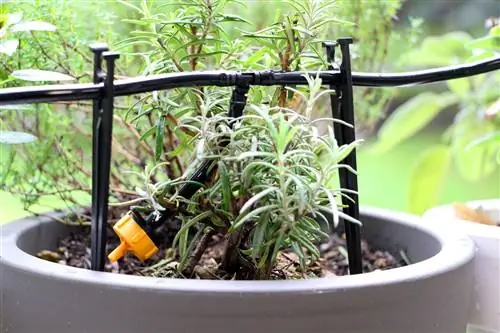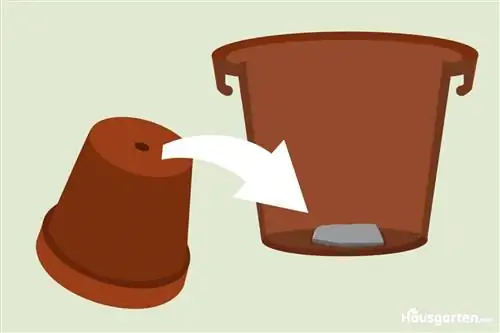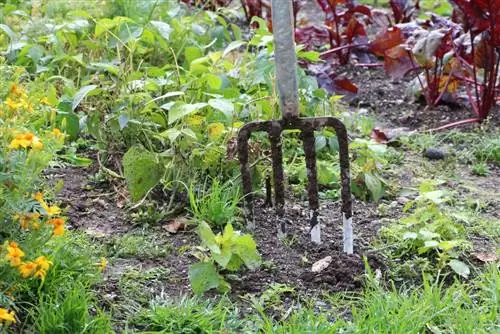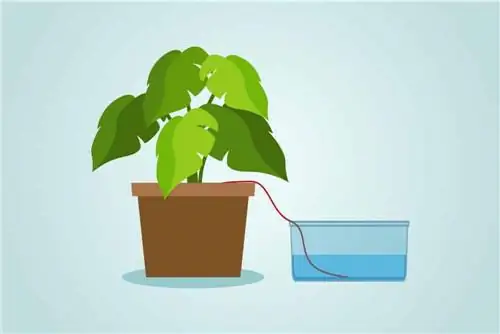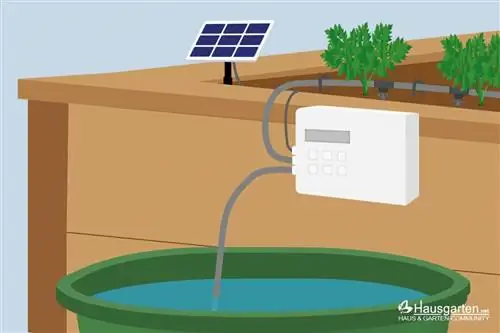- Author admin [email protected].
- Public 2023-12-17 03:39.
- Last modified 2025-01-24 12:45.
A solar irrigation system allows you to water your plants in the garden, greenhouse or balcony using solar energy. You can find out whether the alternative to the socket is suitable for your own project in our test.
Number of plants
One of the most important points in a solar panel irrigation system is the maximum number of plants that can be watered. This is often the biggest disadvantage of these systems. They are only suitable for a small group, for example your vegetables in the raised bed or part of them in the greenhouse. If you want to operate your entire garden irrigation system with solar energy, you usually have to rely on several modules and powerful pumps. However, they are ideal for local use or on the balcony. On average, you can water between 15 and 50 plants at the same time.
Number of sprinklers
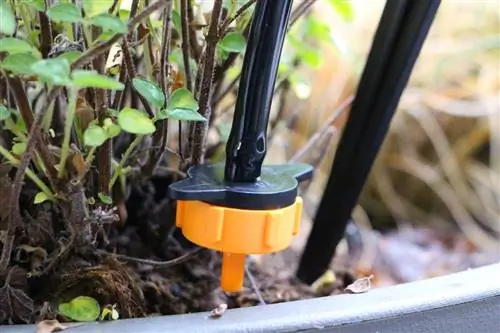
In contrast to classic garden irrigation systems, which can be expanded sufficiently depending on the model, sustainable solar irrigation is limited to a certain number of sprinklers. This guarantees that the sprinklers work as effectively as possible and that the water can be transported to them with enough pressure. The number of sprinklers is often directly related to the amount of plants that can be served. Since most systems rely on drip irrigation, these are easy-to-place drip sprinklers.
Power consumption of the solar pump
In order for the solar pump to be used effectively for irrigation, the power consumption of the module, specified in Wp (Watt peak), is crucial. The higher the power consumption of the module, the more solar energy can be converted and stored in the battery. Since irrigation systems are generally smaller modules, you must expect the following maximum outputs, which will not be sufficient for every project, which could potentially lead to energy shortages:
- 1 Wp
- 3, 5 wp
- 5 Wp
Note:
If you don't have enough power, you can of course replace the solar module.

Battery Capacity
When it comes to battery capacity, solar-powered irrigation systems have a lot of room for improvement. Even if the solar module is extremely effective, the battery capacity is often a little too low. Between 1.000 and 1,500 mAh are among the typical capacities that come with irrigation systems and are not efficient enough depending on the intended use. Fortunately, batteries with a higher capacity can be replaced in just a few steps. Capacities of at least 2,000 mAh with a voltage of 3.6 V are recommended.
Frequency and duration
Solar irrigation systems are usually equipped with programs or different intervals at which the plants are supplied with water. Since the systems are ideally used locally, these intervals are often sufficient because they can be adjusted to the water requirements of individual plant groups. The following modes are available (depending on model):
- 2 x daily
- 3 x daily if there is a high water requirement
- individual holiday functions
This is enough for the majority of plants grown in the garden or in containers. More important than the frequency is the duration of the intervals. Ideally, the irrigation systems have sufficient adjustment options so that the plants do not receive too little water or drown. The following time periods are often available:
- 30 s
- 60 s
- 120 s
- 180 s
- 240 s
- 480 s
- 720 s
Note:
A smart solar pump adapts the amount of water administered individually to the current weather situation. This is ideal for regions with frequent or irregular rainfall.
Flow rate
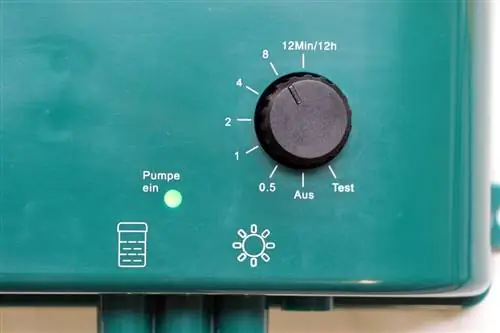
The flow rate indicates how many liters of water can be transported to the plants via the irrigation system within a certain period of time. This information is important if you have many or very thirsty plants that need significantly more water. Since the solar pumps are small systems, you have to expect a lower delivery rate. It is usually given in liters per hour (l/h). Typical maximum flow rates can be:
- 20 to 30 l/h for standard devices
- up to 100 l/h for professional devices
Attention:
The flow rate is also influenced by the number of sprinklers used and the pump pressure. Some devices with solar operation perform significantly worse than classic models with socket operation.
Funding level
The head of the irrigation system is not only important if you want to use the pump for a raised bed or if you want to let it into the ground. Since most systems cannot be connected to the tap, but rather draw the irrigation water from a large container, for example a rain barrel, the solar pump must be strong enough for transport. The irrigation systems mainly have the following heads, which is sufficient for local use:
- 2 m
- 2, 5 m
- 3 m
- 4 m
- 6 m (professional devices)
Montage
The complexity of assembling the solar irrigation system depends heavily on the model and whether you already have experience in this area. The majority of systems available are equipped with all the necessary components required for assembly and operation. As with other irrigation systems, the hoses must be cut to size yourself.

